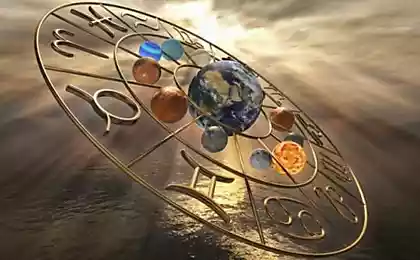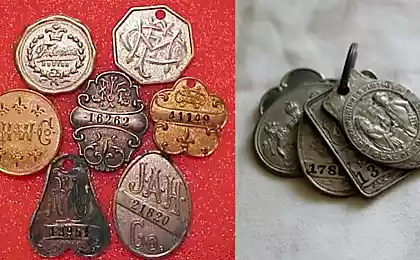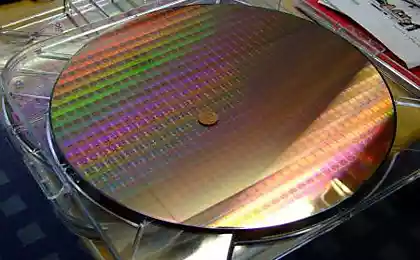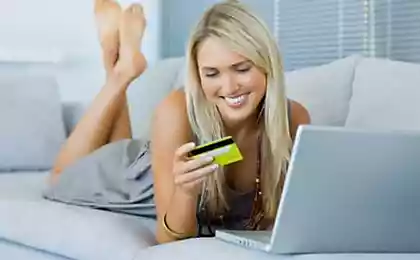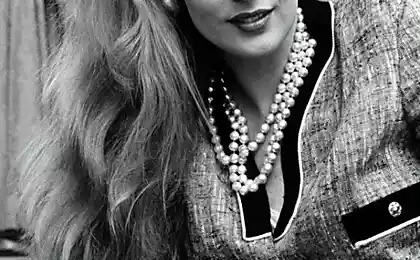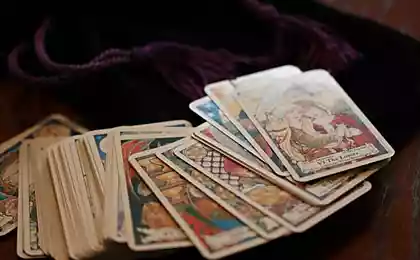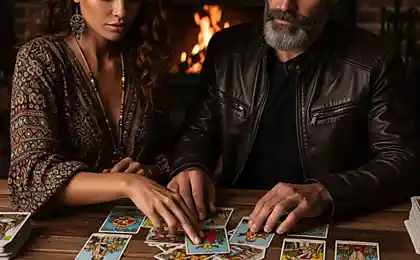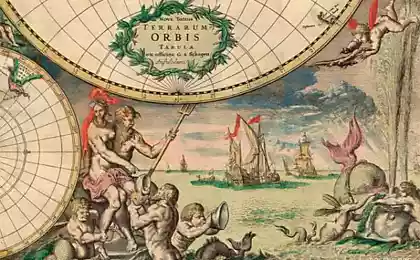816
How to create a MAP of the BODY
What is proprioception and how to improve it
What it is proprioception? The proprioception can be described as a body sense or kinesthetic awareness, i.e. the ability of the brain to perceive the relative position and movement of various body parts.Thanks proprietaiy you know exactly where in space your hands are when you move them, even if your eyes are closed.
Forty two million eighty thousand five hundred
All coordinated actions depend on proprioception. If it is violated, for example, neurological disease or intoxication, the most simple actions like walking or even standing on one place becomes impossibly difficult. It is quite obvious that movement at the elite level in sports or dancing require an elite level of sensations of the body. For example, you can't just roll back while standing on the rope, not knowing exactly what makes your body in each moment.
Exact feeling of the body is also extremely important for good health. After reading this article, you will understand that the problems proprietaiy can be a major source of pain in your body. Therefore, improving proprioception is an excellent goal for anyone who wants to improve results in the sport or to get rid of various kinds of pain.
In the brain creates a map of the bodyThe key to understanding proprioception is a map of the body. Card body are the areas of the brain, designed to serve as a representation of different body parts, just as lines on the map are roads.
Every body part we can associate a separate part of the brain involved in movement and perception of this body part.We have hands and we have a virtual image of the hand in the head — part of the brain that represent the size, shape, and position of hands. The brain also assigns space to represent inanimate objects that we need to feel and control like a tennis racket, tools, or cowboy hat.
Parts of the body communicate with their virtual counterparts in the following way.In our body are millions of microscopic organs called mechanoreceptors. When they are stimulated by mechanical force, they send a signal through the nervous system to the part of the brain that deals with perception of this body part. The brain collects all these signals from countless sources and determines where exactly that is and what it does.In essence, the brain creates numerous maps of the body, which then uses to determine what is happening and how to move.
Twenty five million one hundred forty nine thousand two hundred fifteen
The correct movements require accurate maps of the bodySince the brain uses maps for decision-making about how to perform a particular movement, it is obvious thatthe more accurate you are, the more accurate and perfect is movement. Accordingly, conversely, if the map is unclear or vague, the choice of the various possibilities for movement will be limited.
These provisions are confirmed by the fact that part of the body that you want to move more often have a larger card. For example, the hand is able to perform extremely precise and differentiated movement and feel the different effects in the brain for its control allotted a large area. The brain devotes very little space to create maps of parts of the body that have received little attention, such as the middle of the back or elbow. If we drew a picture of a human body where each part has size proportional to its virtual counterpart, we would see such a man. This figure called homunculus.
Another confirmation of the fact that maps are extremely important for coordination, is that they actually get bigger when we use a particular part of the body. For example, the part of the brain of a musician who feels and controls the toes, is considerably greater than a similar part of the person who uses his hands are so active.
Invalid cards can lead to painNeat cards have great impact on how we feel. Scientists have discovered that they can cause pain the participants of the experiment, creating an unusual sensory illusions using mirrors or other methods of deception of perception.
These illusions effectively create a "sensory-motor mismatch," a conflict between the real position of body parts and their virtual image in the brain. The result is often pain. Based on these and other experiments, many scientists have concluded that the gaps, "spots" or other inaccurate body image can be an important factor in the occurrence of chronic pain and that correcting such problems could potentially get rid of them.
One of the most striking examples of potential problems arising because of incorrect cards is a phenomenon called «phantom pain». Many amputees experience a sensation often excruciating pain in the missing body part. This is because, despite the absence of limbs, a virtual image of her continues to exist and it can be stimulated due to the influence of neighboring areas of the brain. When this happens, the brain gets confused and creates an unusually real feeling of the missing limb. Amazing way to get rid of phantom pains is to place the remaining limb in a mirrored box so to give the brain the sensation that the missing limb exists and feels good. It sounds like some fiction from the Matrix or Avatar, but it is.
The maps are built up through the movementMaps are constantly updated to keep your body ready for the constant changing requirements. You can instantly feel the change in your map with a simple experiment. Try to imagine or sense the exact shape and position of your ears. After this, RUB your left ear for a few seconds and then compare your ability to sense the left ear and right. You will notice that left ear feel much easier. This is simply because touching the ear, we activate it the mechanoreceptors that send a signal to the brain and thereby activate the map for that zone. Of course, such sensitivity is only temporary.
In order for the changes to the maps were long term or permanent, you need to constantly over a long period of time to undertake the map. Remember that the musicians of the area associated with the fingers, more than ordinary people. When a certain body part or movement, we are constantly coordinated and conscious way, in the appropriate parts of the brain occur, the actually observed physical changes. This is one reason why we become better at what we practice.
Of course, not all traffic is equivalent to stimulate brain maps. The greatest potential for a qualitative change of brain maps have a movement committed with curiosity and interest in the nature study, the rich touch feeling, slow, soft, lucid and don't lead to pain.
The lack of movement reverses the process of creating maps back. If you do not make some movement for a long period of time - you will lose the ability to accurately sense and control that movement. This is called sensory-motor amnesia. The body map in the brain becomes blurry, less precise. If you glued three fingers so that they move as one in a few days, the brain will represent them as a whole, not three separate parts that can move individually.
The extreme case can be seen in the example of the Indian monk Amar Bharti, who raised up your hand 38 years ago and since then its not down. His hand almost atrophied.
Similarly, there is a distortion map if the pelvis or spine do not move in full possible range of motion. After many years of such failure to seek attention all the middle part of the human body begins to move as one big block. This is typical, for example, white men in the West. What follows from this lesson?Move or you'll lose the ability to move.
Ninety million eight hundred seventy one thousand nine hundred fifty five
The pain is hurting cardsAnother way to reduce the quality of the cards your body is getting injured. Pain reduces the brain's ability to process proprioceptive information coming from the injured joint, because the brain is busy listening to the pain signals, which, of course, take precedence. By the way this process works in the opposite direction if one area hurts, you can block processing of pain signals by rubbing this area and thus sending information from the mechanoreceptors to the brain. That is why we patiram hurt place, when we are in pain.
Pain also reduces movement in the joint, which further reduces the flow of proprioceptive information from the joint to the brain. This can lead to degradation of the quality of the card. Thus, trauma can be a potential beginning of a vicious circle — the pain reduces movement, which impairs the coordination that will further reduce motion and cause pain and so on. This is one reason why the man can always twist the same ankle.
How to improve proprioceptionWhat can we do with all this valuable information?
First, one should understand that good movement and wellbeing have not only physical aspect. The state of body image in the brain is as important as the condition of the real body (a change of the virtual image is often simpler and easier — through the imagination and through the extension of the image of his own body in the process of research).
Second, note the Commission of acts without pain. Even if the pain is slight and does not prevent to do to you what you want to do, it does not allow you to do what you do best. Whether you like it or not, the use of the body when it is not complete, since the functioning of the nervous system will be partially occupied compensation violations — this will change the patterns of your movement and your coordination beyond your awareness.
Third, to maintain in good condition "card body" and related functions more exercise conscious, research, and gaming traffic. Try classes in the Feldenkrais method, which was created including for the development of favorable changes in the body map. Method of Alexander, ideokinesis, qigong or tai Chi will also be an excellent choice.published
© Todd Hardgrove
P. S. And remember, just changing your mind — together we change the world! ©
Source: feldy.ru/read/chto_takoe_propriocepcia/
What it is proprioception? The proprioception can be described as a body sense or kinesthetic awareness, i.e. the ability of the brain to perceive the relative position and movement of various body parts.Thanks proprietaiy you know exactly where in space your hands are when you move them, even if your eyes are closed.
Forty two million eighty thousand five hundred
All coordinated actions depend on proprioception. If it is violated, for example, neurological disease or intoxication, the most simple actions like walking or even standing on one place becomes impossibly difficult. It is quite obvious that movement at the elite level in sports or dancing require an elite level of sensations of the body. For example, you can't just roll back while standing on the rope, not knowing exactly what makes your body in each moment.
Exact feeling of the body is also extremely important for good health. After reading this article, you will understand that the problems proprietaiy can be a major source of pain in your body. Therefore, improving proprioception is an excellent goal for anyone who wants to improve results in the sport or to get rid of various kinds of pain.
In the brain creates a map of the bodyThe key to understanding proprioception is a map of the body. Card body are the areas of the brain, designed to serve as a representation of different body parts, just as lines on the map are roads.
Every body part we can associate a separate part of the brain involved in movement and perception of this body part.We have hands and we have a virtual image of the hand in the head — part of the brain that represent the size, shape, and position of hands. The brain also assigns space to represent inanimate objects that we need to feel and control like a tennis racket, tools, or cowboy hat.
Parts of the body communicate with their virtual counterparts in the following way.In our body are millions of microscopic organs called mechanoreceptors. When they are stimulated by mechanical force, they send a signal through the nervous system to the part of the brain that deals with perception of this body part. The brain collects all these signals from countless sources and determines where exactly that is and what it does.In essence, the brain creates numerous maps of the body, which then uses to determine what is happening and how to move.
Twenty five million one hundred forty nine thousand two hundred fifteen
The correct movements require accurate maps of the bodySince the brain uses maps for decision-making about how to perform a particular movement, it is obvious thatthe more accurate you are, the more accurate and perfect is movement. Accordingly, conversely, if the map is unclear or vague, the choice of the various possibilities for movement will be limited.
These provisions are confirmed by the fact that part of the body that you want to move more often have a larger card. For example, the hand is able to perform extremely precise and differentiated movement and feel the different effects in the brain for its control allotted a large area. The brain devotes very little space to create maps of parts of the body that have received little attention, such as the middle of the back or elbow. If we drew a picture of a human body where each part has size proportional to its virtual counterpart, we would see such a man. This figure called homunculus.
Another confirmation of the fact that maps are extremely important for coordination, is that they actually get bigger when we use a particular part of the body. For example, the part of the brain of a musician who feels and controls the toes, is considerably greater than a similar part of the person who uses his hands are so active.
Invalid cards can lead to painNeat cards have great impact on how we feel. Scientists have discovered that they can cause pain the participants of the experiment, creating an unusual sensory illusions using mirrors or other methods of deception of perception.
These illusions effectively create a "sensory-motor mismatch," a conflict between the real position of body parts and their virtual image in the brain. The result is often pain. Based on these and other experiments, many scientists have concluded that the gaps, "spots" or other inaccurate body image can be an important factor in the occurrence of chronic pain and that correcting such problems could potentially get rid of them.
One of the most striking examples of potential problems arising because of incorrect cards is a phenomenon called «phantom pain». Many amputees experience a sensation often excruciating pain in the missing body part. This is because, despite the absence of limbs, a virtual image of her continues to exist and it can be stimulated due to the influence of neighboring areas of the brain. When this happens, the brain gets confused and creates an unusually real feeling of the missing limb. Amazing way to get rid of phantom pains is to place the remaining limb in a mirrored box so to give the brain the sensation that the missing limb exists and feels good. It sounds like some fiction from the Matrix or Avatar, but it is.
The maps are built up through the movementMaps are constantly updated to keep your body ready for the constant changing requirements. You can instantly feel the change in your map with a simple experiment. Try to imagine or sense the exact shape and position of your ears. After this, RUB your left ear for a few seconds and then compare your ability to sense the left ear and right. You will notice that left ear feel much easier. This is simply because touching the ear, we activate it the mechanoreceptors that send a signal to the brain and thereby activate the map for that zone. Of course, such sensitivity is only temporary.
In order for the changes to the maps were long term or permanent, you need to constantly over a long period of time to undertake the map. Remember that the musicians of the area associated with the fingers, more than ordinary people. When a certain body part or movement, we are constantly coordinated and conscious way, in the appropriate parts of the brain occur, the actually observed physical changes. This is one reason why we become better at what we practice.
Of course, not all traffic is equivalent to stimulate brain maps. The greatest potential for a qualitative change of brain maps have a movement committed with curiosity and interest in the nature study, the rich touch feeling, slow, soft, lucid and don't lead to pain.
The lack of movement reverses the process of creating maps back. If you do not make some movement for a long period of time - you will lose the ability to accurately sense and control that movement. This is called sensory-motor amnesia. The body map in the brain becomes blurry, less precise. If you glued three fingers so that they move as one in a few days, the brain will represent them as a whole, not three separate parts that can move individually.
The extreme case can be seen in the example of the Indian monk Amar Bharti, who raised up your hand 38 years ago and since then its not down. His hand almost atrophied.
Similarly, there is a distortion map if the pelvis or spine do not move in full possible range of motion. After many years of such failure to seek attention all the middle part of the human body begins to move as one big block. This is typical, for example, white men in the West. What follows from this lesson?Move or you'll lose the ability to move.
Ninety million eight hundred seventy one thousand nine hundred fifty five
The pain is hurting cardsAnother way to reduce the quality of the cards your body is getting injured. Pain reduces the brain's ability to process proprioceptive information coming from the injured joint, because the brain is busy listening to the pain signals, which, of course, take precedence. By the way this process works in the opposite direction if one area hurts, you can block processing of pain signals by rubbing this area and thus sending information from the mechanoreceptors to the brain. That is why we patiram hurt place, when we are in pain.
Pain also reduces movement in the joint, which further reduces the flow of proprioceptive information from the joint to the brain. This can lead to degradation of the quality of the card. Thus, trauma can be a potential beginning of a vicious circle — the pain reduces movement, which impairs the coordination that will further reduce motion and cause pain and so on. This is one reason why the man can always twist the same ankle.
How to improve proprioceptionWhat can we do with all this valuable information?
First, one should understand that good movement and wellbeing have not only physical aspect. The state of body image in the brain is as important as the condition of the real body (a change of the virtual image is often simpler and easier — through the imagination and through the extension of the image of his own body in the process of research).
Second, note the Commission of acts without pain. Even if the pain is slight and does not prevent to do to you what you want to do, it does not allow you to do what you do best. Whether you like it or not, the use of the body when it is not complete, since the functioning of the nervous system will be partially occupied compensation violations — this will change the patterns of your movement and your coordination beyond your awareness.
Third, to maintain in good condition "card body" and related functions more exercise conscious, research, and gaming traffic. Try classes in the Feldenkrais method, which was created including for the development of favorable changes in the body map. Method of Alexander, ideokinesis, qigong or tai Chi will also be an excellent choice.published
© Todd Hardgrove
P. S. And remember, just changing your mind — together we change the world! ©
Source: feldy.ru/read/chto_takoe_propriocepcia/
Harvard step test: find out your endurance cardiovascular and respiratory systems
3 reliable ways to ruin a marriage
